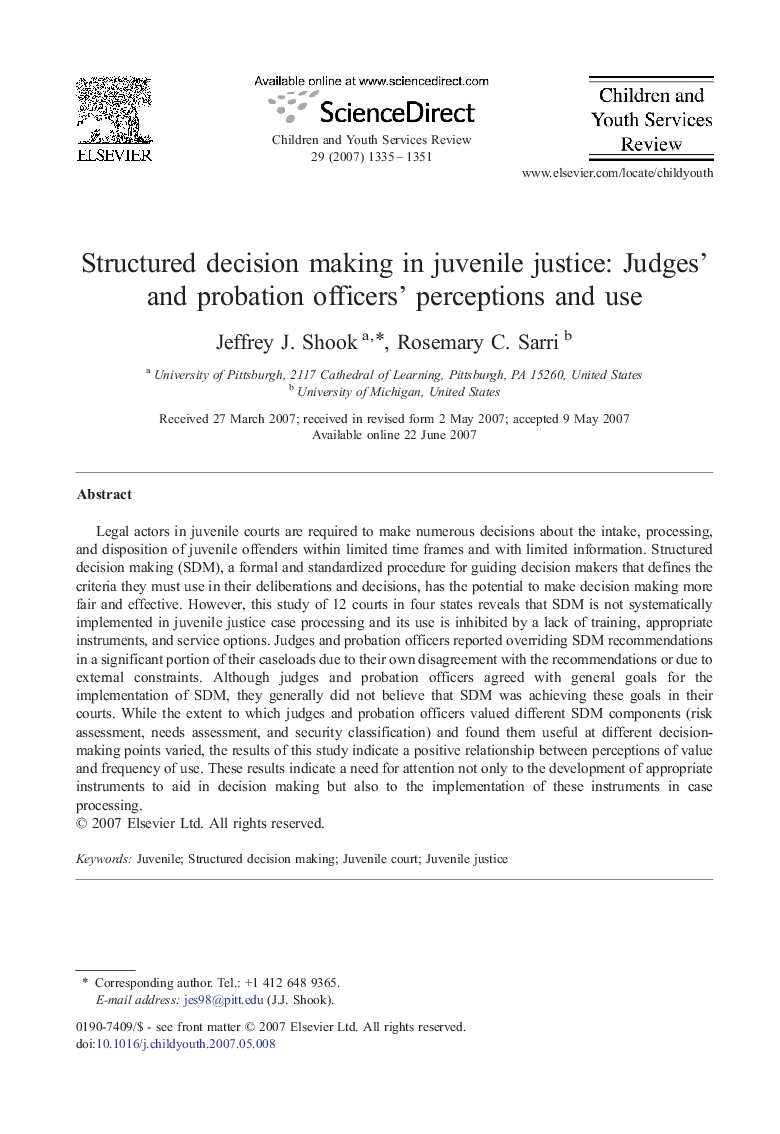| Article ID | Journal | Published Year | Pages | File Type |
|---|---|---|---|---|
| 347128 | Children and Youth Services Review | 2007 | 17 Pages |
Legal actors in juvenile courts are required to make numerous decisions about the intake, processing, and disposition of juvenile offenders within limited time frames and with limited information. Structured decision making (SDM), a formal and standardized procedure for guiding decision makers that defines the criteria they must use in their deliberations and decisions, has the potential to make decision making more fair and effective. However, this study of 12 courts in four states reveals that SDM is not systematically implemented in juvenile justice case processing and its use is inhibited by a lack of training, appropriate instruments, and service options. Judges and probation officers reported overriding SDM recommendations in a significant portion of their caseloads due to their own disagreement with the recommendations or due to external constraints. Although judges and probation officers agreed with general goals for the implementation of SDM, they generally did not believe that SDM was achieving these goals in their courts. While the extent to which judges and probation officers valued different SDM components (risk assessment, needs assessment, and security classification) and found them useful at different decision-making points varied, the results of this study indicate a positive relationship between perceptions of value and frequency of use. These results indicate a need for attention not only to the development of appropriate instruments to aid in decision making but also to the implementation of these instruments in case processing.
